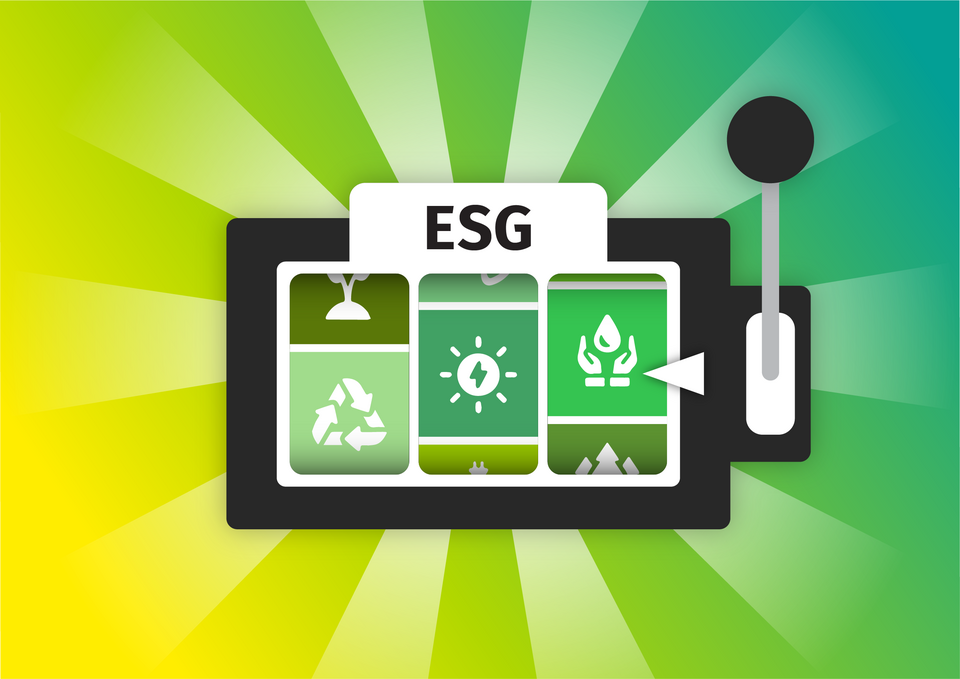Does ESG communication always have to look green?
Companies around the world are becoming more sustainable in their thoughts and actions than ever before. Responsibility has gone from being a nice-to-have to a must. New regulations have also been imposed on the construction industry, putting the construction of new properties to the test in terms of the environment. ESG - Environmental, Social and Corporate Governance - has become a benchmark for construction projects. In short, sustainability is on on top of everyone's agenda and plays a key role in every business decision.
When sustainable green overpowers corporate design in ESG communication
And because this is all relatively new and not every company can change its processes at the touch of a button, sustainable business is a competitive advantage. Goals, concepts and active action in terms of sustainability are moving to the centre of communication. And this is happening increasingly homogeneously. Most companies are translating ESG into the colour green in their communications. From fresh a digital green to a down-to-earth forest green, all shades of the green spectrum are represented. As a result, sustainability communication looks very similar. The imagery of companies is also strikingly alike. We all know them: the solar fields and wind turbines, and of course the drone flight over meadows and forests. And everyone immediately knows what it's all about. Something green and sustainable, but who is the sender?
Furthermore, we often observe that green sustainability communication does not harmonise with the brand's corporate design. It then appears as an additional green theme on the trade fair wall or is pasted over the corporate design in the website header. And sometimes a bright green is then placed alongside the corporate red. Not only is this not very harmonious, but above all it dilutes the brand communication. However, the purpose of corporate design is to achieve a uniqueness that can be recognised and conveys the brand's messages and promises. If the target group can no longer identify colours, themes or imagery and can barely distinguish between the presentations of its business partners, the corporate design has failed to achieve its purpose.

Making ESG communication not green, but modern
Being sustainable is no longer a unique selling proposition. On the contrary, too much emphasis on a green image can come across as artificial and deliberate, as acting sustainably is a must today. Today, a modern company that thinks about the future is also always sustainable.
So how can communication that focuses on sustainability take place without it becoming louder than the brand itself?
Some brands have already taken the next step and opted for a digital, modern image in which sustainability communication is integrated as a matter of course. Green communication is breathed and lived without being primarily green. This is demonstrated by a modern and innovative corporate design. And suddenly sustainability communication fits in with the company's messages again. It no longer looks like a label that is boldly stuck over everything without reference. On the contrary. It demonstrates sustainable management through values and messages.
And if the message needs to be more explicit, the target group can be guided by a few learned clues such as an icon for e-charging stations or a harmonious green colour accent in the infographic, while the company still remains credible.
Sustainable ESG communication means telling real arguments with emotion
Speaking of credibility. Instead of depicting the rainforest, let's show people's lives in a green future. Less CO2 can't just be illustrated by showing forests, water or ice. Instead, let's show safety, confidence, innovation, opportunities and, above all, the living environments of customers and target groups. Let's talk specifically about sustainable solutions and innovations for operational processes for energy procurement, production or recycling of materials.
Sustainability should be relevant and not just a box to check. This also means that communication must answer the question of how exactly sustainability is achieved. It is no longer enough to show a picture of a wind turbine if there are no verifiable arguments or figures to back it up. This image, this narrative, is used too excessively at trade fairs and on the Internet.
To make a truly lasting impression, information and valid arguments must be communicated clearly and easily understandable. It's more about serious content than eye candy. And there are many arguments and stories that can be told. After all, sustainability today means much more than just planting trees. Sustainability can mean using digital software to make processes more efficient, making properties smart and thus heating them in a way that conserves resources, developing materials that can be recycled and so on. Green has long since ceased to be the focus here - the spirit of innovation is now!
The design must carry the message, not the other way round
Sometimes the corporate design does not allow for visionary and sustainable communication. If the developments and innovations have found their place in the company's strategy, but the brand no longer fits in visually with this innovation leadership, the brand design needs a brush-up.
If a company opens up grand visions and talks about a sustainable future with innovative solutions, but the visual communication looks less dynamic and digital, the message is not credible. Practice what you preach! But stay unique.
Our goal as a brand communication agency is a unique positioning that can withstand the challenges of the future. A corporate identity that is both strong and flexible enough to support developments for a long-term sustainability strategy. A design that is modern without following trends, which are by definition fast-moving and therefore contrary to sustainability. A company's visual brand should first and foremost carry and implicitly communicate its messages, ideas and visions. And that's what we do! We advise companies on how to position themselves as a strong brand for the demands of the future and remain competitive. Let us fill sustainability with content again instead of just the colour green.
